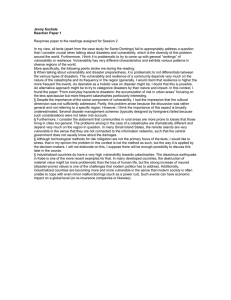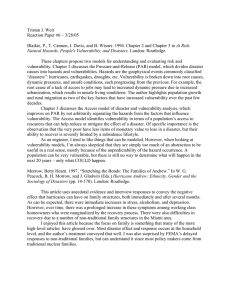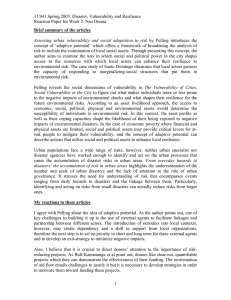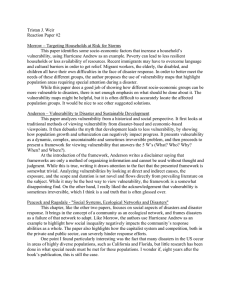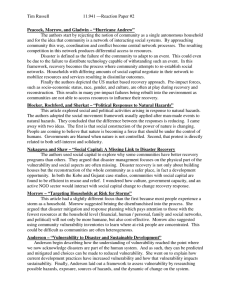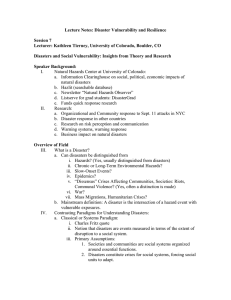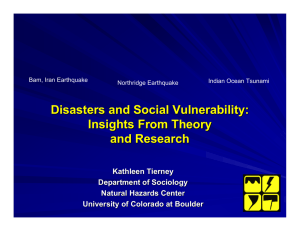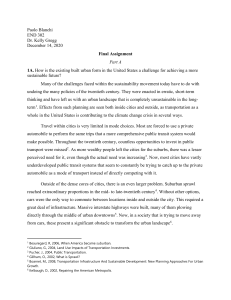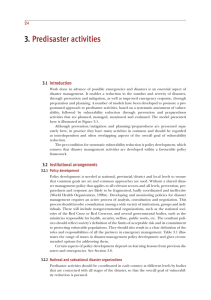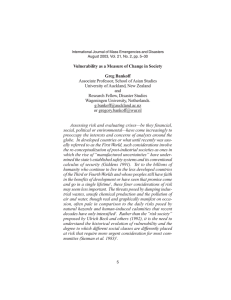11.941 Spring 2005: Disaster, Vulnerability and Resilience
advertisement
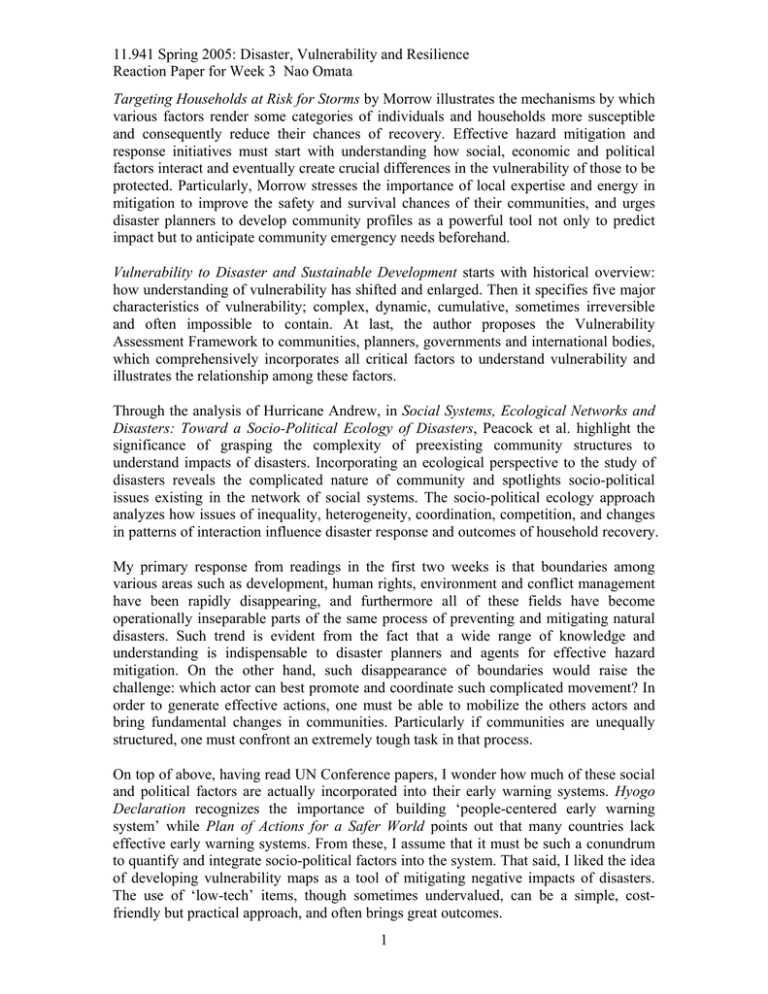
11.941 Spring 2005: Disaster, Vulnerability and Resilience Reaction Paper for Week 3 Nao Omata Targeting Households at Risk for Storms by Morrow illustrates the mechanisms by which various factors render some categories of individuals and households more susceptible and consequently reduce their chances of recovery. Effective hazard mitigation and response initiatives must start with understanding how social, economic and political factors interact and eventually create crucial differences in the vulnerability of those to be protected. Particularly, Morrow stresses the importance of local expertise and energy in mitigation to improve the safety and survival chances of their communities, and urges disaster planners to develop community profiles as a powerful tool not only to predict impact but to anticipate community emergency needs beforehand. Vulnerability to Disaster and Sustainable Development starts with historical overview: how understanding of vulnerability has shifted and enlarged. Then it specifies five major characteristics of vulnerability; complex, dynamic, cumulative, sometimes irreversible and often impossible to contain. At last, the author proposes the Vulnerability Assessment Framework to communities, planners, governments and international bodies, which comprehensively incorporates all critical factors to understand vulnerability and illustrates the relationship among these factors. Through the analysis of Hurricane Andrew, in Social Systems, Ecological Networks and Disasters: Toward a Socio-Political Ecology of Disasters, Peacock et al. highlight the significance of grasping the complexity of preexisting community structures to understand impacts of disasters. Incorporating an ecological perspective to the study of disasters reveals the complicated nature of community and spotlights socio-political issues existing in the network of social systems. The socio-political ecology approach analyzes how issues of inequality, heterogeneity, coordination, competition, and changes in patterns of interaction influence disaster response and outcomes of household recovery. My primary response from readings in the first two weeks is that boundaries among various areas such as development, human rights, environment and conflict management have been rapidly disappearing, and furthermore all of these fields have become operationally inseparable parts of the same process of preventing and mitigating natural disasters. Such trend is evident from the fact that a wide range of knowledge and understanding is indispensable to disaster planners and agents for effective hazard mitigation. On the other hand, such disappearance of boundaries would raise the challenge: which actor can best promote and coordinate such complicated movement? In order to generate effective actions, one must be able to mobilize the others actors and bring fundamental changes in communities. Particularly if communities are unequally structured, one must confront an extremely tough task in that process. On top of above, having read UN Conference papers, I wonder how much of these social and political factors are actually incorporated into their early warning systems. Hyogo Declaration recognizes the importance of building ‘people-centered early warning system’ while Plan of Actions for a Safer World points out that many countries lack effective early warning systems. From these, I assume that it must be such a conundrum to quantify and integrate socio-political factors into the system. That said, I liked the idea of developing vulnerability maps as a tool of mitigating negative impacts of disasters. The use of ‘low-tech’ items, though sometimes undervalued, can be a simple, costfriendly but practical approach, and often brings great outcomes. 1
